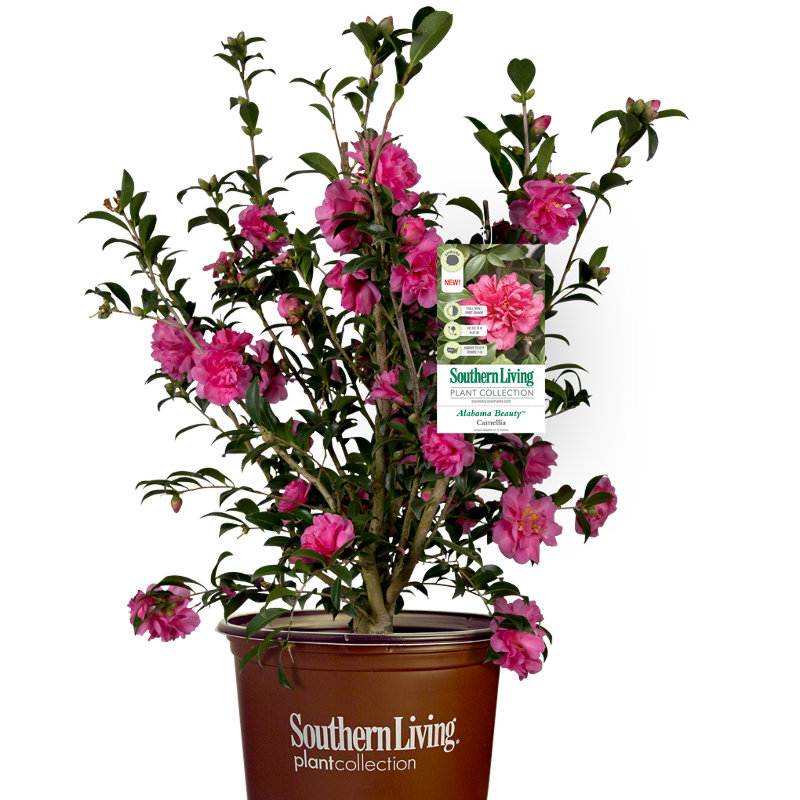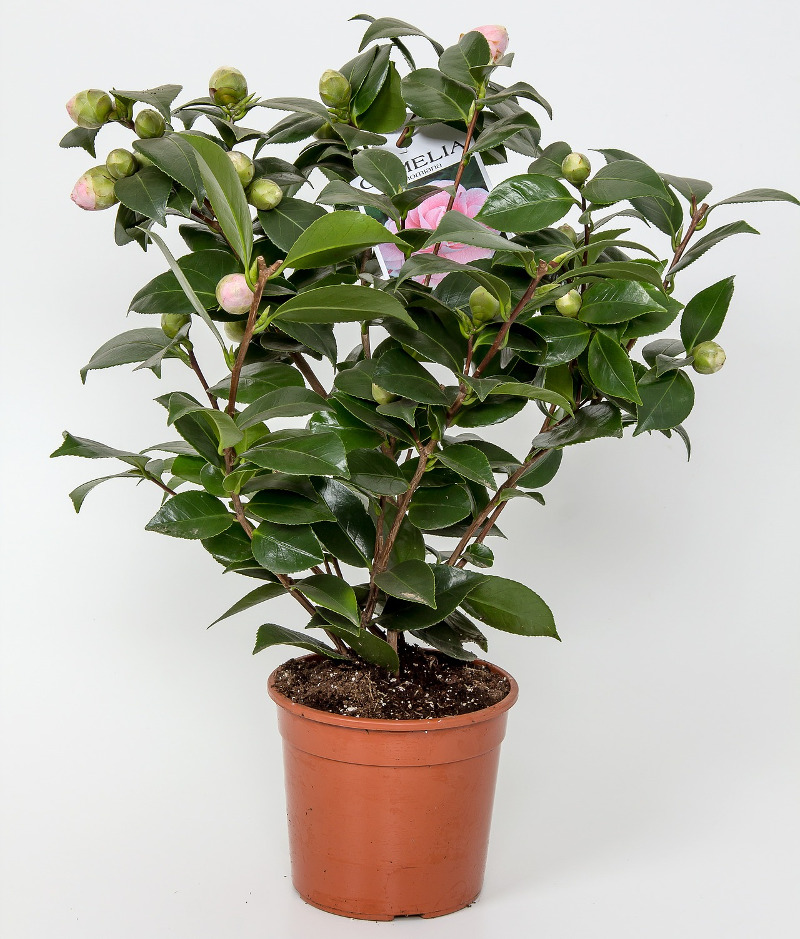Camellias are flowering shrubs and small trees that thrive in the shade. The striking blooms of this evergreen plant come in a wide range of colors, including pink, white and red. Camellia flowers light up the garden during the cooler months of the year in late fall, winter or early spring.

With some attention to planting and care, camellias can thrive in pots. Container-grown camellias generally don’t grow as wide or as tall as their ground-grown counterparts. They will bloom profusely, however.
Camellias grown in containers are eye-catching with their deep green, glossy foliage and colorful flowers. In bloom, they make a stunning focal point in the garden. Even when out of bloom, camellias bring the garden to life with their attractive, evergreen foliage. Place camellias on your patio or balcony in a place of prominence or flank walkways with potted camellias.
Planting Camellias in Pots
Plant camellias in the late fall or early spring when the weather is mild. Pot up into a container that is no more than one pot size larger than what the plant is growing in now. It’s important not to plant in too large of a pot, as this can lead to root rot. Some varieties of camellias are susceptible to this deadly disease.

Camellias do best in durable plastic or glazed ceramic pots, as these materials tend to hold in moisture. Avoid planting camellias in terracotta pots. They dry out too quickly. If you are going to plant in a wooden container, seal it prior to planting to preserve moisture. Make sure whatever container you choose has drainage holes.
Best Soil for Camellias in Pots
Camellias thrive in well-draining acidic soil. The ideal pH for camellias is between 5.5 to 6.5. Most potting soils are neutral. This means that it’s necessary to add an acidic fertilizer to your soil when planting.
Ensure the soil you use for camellias is well-draining yet water and nutrient retentive. Good choices include fine potting soils containing draining agents such as pumice or perlite. These mixes will hold in the water and nutrients yet prevent the plant from sitting in moisture. When planting, amend with compost. This will give the plant additional nutrients.
Caring for Camellias in Planters
Follow a few guidelines and camellias can thrive in containers. This includes keeping the plants well-watered and well fed and making sure to pot up every two to three years.
Watering Camellias in Pots
Camellias require a steady stream of water. This doesn’t mean, however, that you should keep the soil soggy. Rather, water camellias in pots when the top 2 to 4 inches of soil in the pot has dried out. The bigger the pot, the deeper you want to check for moisture before watering. When you water, soak the container well, until water is running out of the drainage holes.
Fertilizing Camellias in Pots
Feeding camellias is important if you want to have vibrant, new growth and abundant blooms. Fertilize with an azalea and camellia food, according to package directions. Apply fertilizer once a month when the plant is actively growing from April through September. Always water a camellia before applying fertilizer and avoid feeding in hot weather.

Winter Care of Containerized Camellias
Depending on the climate in which you live, potted camellias may need some extra protection during the cold months of the year. This is especially the case if the container in which you’re growing the camellia is ceramic. Extreme cold conditions followed by warmer weather can lead to cracked pots.
When a freeze is coming, put the potted camellia plant in a protected location, such as under an eave or patio cover or in the garage. The closer you move the plant to the house, the warmer the conditions will be and the less likely there will be cold container damage.
Can Camellias Be Grown Indoors?
While it’s not impossible to grow camellia indoors, it is difficult. In addition to requiring enough light to flower, the plants also need some cold temperatures to bud up and produce flowers. Most homes aren’t cold enough.
If you do decide to try growing camellia indoors, put the plant in the coolest area of the home. Locations such as sun-porches and greenhouses work well. Provide indoor grown camellias with 8 to 10 hours of light per day. If there isn’t enough natural light coming from the windows, put the plant under or near full-spectrum lighting, which simulates daylight.
Indoor grown camellias are susceptible to root rot. It’s important that you only water the plant when the soil has just turned dry. If you use a moisture meter, water right before the meter reads dry.
Indoor grown camellias will grow much more slowly than their outdoor counterparts. Fertilize every 3 to 4 months.
 |
Author Chris Link - Published 05-30-2020 |
